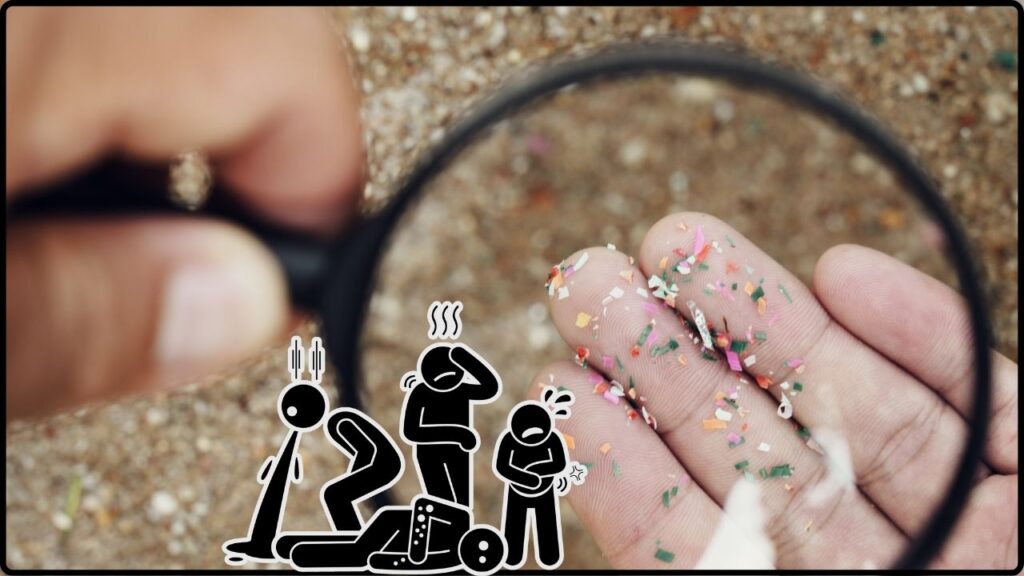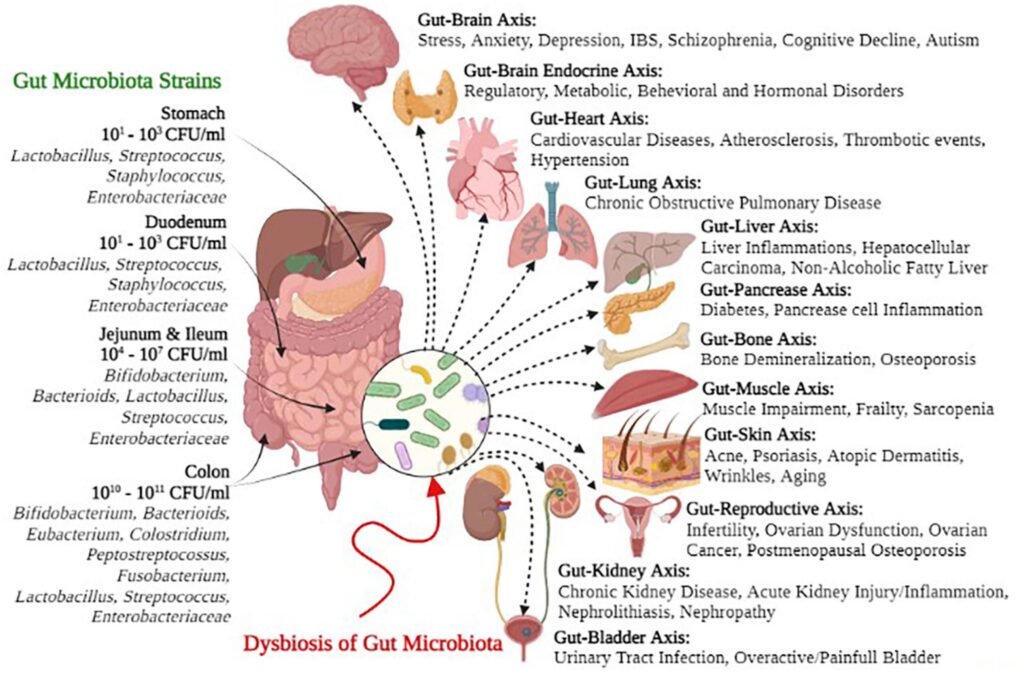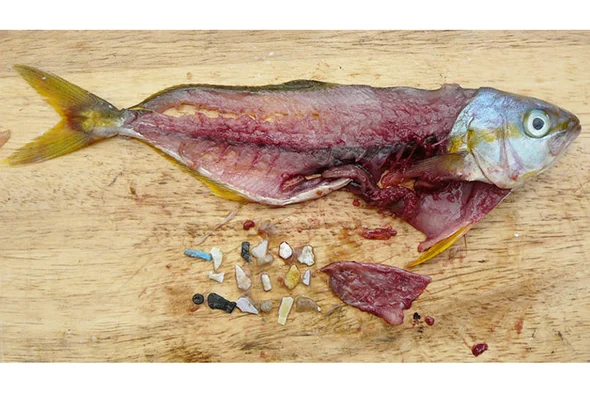New Study: Microplastics Are Wreaking Havoc on the Gut Microbiome: Microplastics are small plastic particles less than 5 millimeters in size, and they’ve quietly crept into our lives, affecting not just our environment but our health as well. A new study has raised serious concerns about how these tiny particles are disrupting the delicate balance of our gut microbiome, leading to a host of potential health issues. From digestive problems to an increased risk of diseases like obesity, autoimmune conditions, and even cancer, the consequences of microplastic exposure are becoming harder to ignore. In this article, we’ll break down how microplastics are affecting the gut microbiome, why this matters for your health, and what you can do to protect yourself from further harm.
New Study: Microplastics Are Wreaking Havoc on the Gut Microbiome
Microplastics are everywhere, and they are silently infiltrating our bodies, disrupting the gut microbiome, and potentially leading to numerous health problems. From digestive issues to obesity, autoimmune diseases, and even cancer, the impacts are vast and serious. However, by taking proactive steps to limit exposure, you can help protect your health and ensure a better future for your gut microbiome.

| Key Topic | Important Details |
|---|---|
| What are Microplastics? | Small plastic particles under 5mm that pollute water, food, and air. |
| Gut Microbiome Impact | Microplastics disrupt the gut’s natural bacteria, leading to dysbiosis (imbalanced gut bacteria). |
| Health Risks | Increased risk of inflammatory bowel disease, obesity, autoimmune conditions, and cancers like colorectal cancer. |
| Microplastic Translocation | Microplastics can move from the gut to organs like the liver, kidneys, and brain, causing systemic health issues. |
| Practical Tips to Reduce Exposure | Avoid plastic containers, opt for glass or metal packaging, use water filters. |
| Official Resources | Frontiers in Microbiology, MDPI, Nature. |
What are Microplastics?
Microplastics are small pieces of plastic that result from larger plastic items breaking down over time. These particles are now found in oceans, rivers, air, and even in the food and water we consume. These tiny plastic particles are virtually impossible to avoid, and they are now recognized as a major environmental and health concern. The scary part? Most of these plastics don’t break down completely, which means they’re sticking around, accumulating in our bodies, and messing with our gut microbiome.
But before we dive deep into the health effects, let’s understand what the gut microbiome is.
Understanding the Gut Microbiome
Your gut is home to trillions of bacteria, fungi, and other microbes, collectively known as the gut microbiome. These microbes play a vital role in digestion, nutrient absorption, immune function, and even your mental health. When these microbes are in balance, your body thrives. However, if something disrupts this balance, it can lead to problems like bloating, indigestion, and more serious diseases.
Gut dysbiosis, a condition where the balance of good and bad bacteria is disturbed, has been linked to various diseases, including obesity, diabetes, and even mental health disorders. Recent research has revealed that microplastics might be a key player in triggering gut dysbiosis, which is why this is such a big deal.

How Microplastics Are Wreaking Havoc on the Gut Microbiome?
When you consume food or drink contaminated with microplastics, those tiny particles travel through your digestive system. Studies suggest that these particles can disrupt the composition of your gut microbiome, leading to an imbalance of the microbes living there. This phenomenon, known as gut dysbiosis, is linked to a range of digestive and systemic health problems.
The Gut Barrier and “Leaky Gut”
Microplastics can also damage the gut barrier, which serves as a protective lining in your intestines. A compromised gut barrier leads to increased intestinal permeability, often referred to as leaky gut. This condition allows harmful substances, such as toxins and pathogens, to leak into the bloodstream. When this happens, your immune system is triggered, leading to inflammation and an increased risk of autoimmune diseases.
Potential Health Risks Linked to Microplastics
1. Digestive Issues
One of the primary health risks associated with microplastics is digestive disturbances. Dysbiosis, or an imbalance in gut bacteria, can impair your digestion and lead to conditions like irritable bowel syndrome (IBS) and inflammatory bowel disease (IBD). Inflammation in the gut can also lead to long-term damage, potentially requiring medical treatment.
2. Obesity and Metabolic Disorders
When the gut microbiome is disturbed by microplastics, the balance of bacteria responsible for breaking down food and absorbing nutrients is disrupted. This imbalance has been linked to obesity and metabolic diseases such as type 2 diabetes. An altered gut microbiome affects how your body stores fat and regulates your blood sugar, making it harder to maintain a healthy weight.
3. Neurodegenerative Diseases
Research suggests that microplastics can migrate from the gut to other organs, including the brain. This movement can trigger inflammation in the brain, which may contribute to neurodegenerative disorders such as Alzheimer’s disease and Parkinson’s disease. As more studies explore this connection, the evidence linking microplastics to brain health is growing stronger.
4. Cancer Risk
Emerging studies are showing a potential link between microplastic exposure and an increased risk of colorectal cancer. Researchers are now looking into how microplastics might be contributing to the rise of cancer in young adults, even as other risk factors like diet and lifestyle have become healthier. Early signs point to microplastics’ ability to cause DNA damage and promote cell mutations in the gut.

The Science Behind Microplastics in the Body
When you ingest food or water contaminated with microplastics, these particles don’t just pass through your body. They can enter your bloodstream through the intestinal walls, circulating to organs such as the liver, kidneys, and even the brain. Studies have shown that these particles are small enough to be absorbed by tissues, potentially causing inflammation and oxidative stress.
Microplastics are also known to carry harmful chemicals, including additives like phthalates and bisphenol A (BPA), which can act as endocrine disruptors. These chemicals may interfere with your hormones, further exacerbating the health risks.
Case Studies: Real-Life Examples
A groundbreaking study in the journal Environmental Science & Technology found that more than 80% of tap water samples tested worldwide contained microplastics. This demonstrates the widespread nature of the problem and the difficulty of avoiding exposure. In fact, researchers have discovered microplastics in human stool samples, proving that ingestion is occurring and that they are entering the human body.
Another study from the University of Exeter found that fish consumed by humans have significant amounts of microplastics in their digestive systems. This suggests that when we eat seafood, we might be inadvertently consuming microplastics too.
Expert Opinions
Dr. Maria Gonzales, a gastroenterologist at the National Institute of Health (NIH), explains, “The presence of microplastics in the gut microbiome is alarming. It’s not just about digestive discomfort; this can contribute to chronic conditions that affect not just digestion, but also overall immunity, inflammation, and even mental health.”
Dr. Gonzales continues, “As more research emerges, it’s becoming clearer that microplastics could be influencing a wide range of diseases, making it more important than ever to take preventive action.”
Global and Local Efforts to Combat Microplastics
Around the globe, nations are starting to address the issue of microplastics. The European Union has passed legislation to reduce plastic waste and has committed to developing biodegradable alternatives. In the United States, researchers and environmental groups have called for stronger regulations to limit the release of microplastics into the environment, especially from industrial waste and plastic breakdown.
Locally, individuals can take steps to reduce their exposure to microplastics by avoiding plastic containers, especially those containing food and beverages.

What the Future Holds?
Research into the long-term health effects of microplastics is still in its early stages. However, ongoing studies aim to better understand how these particles affect not only the gut microbiome but also other aspects of human health. As more funding and attention are directed toward this problem, we can expect clearer guidelines on how to minimize exposure and mitigate risks.
What You Can Do to Reduce Exposure?
While we can’t completely escape microplastics, there are steps you can take to limit your exposure:
- Avoid Plastic Packaging: When possible, choose foods packaged in glass or metal containers. Microplastics are found in plastic food wrappers and bottles, so reducing plastic consumption can lower your exposure.
- Use Loose-Leaf Tea: Avoid tea bags, which can shed microplastics into your drink. Opt for loose-leaf tea instead.
- Filter Your Water: Install water filters that are designed to remove microplastics. This helps ensure you aren’t ingesting plastics with your drinking water.
- Limit Use of Plastic Containers: Avoid storing hot food in plastic containers, as heat can cause plastics to release harmful chemicals.
- Reduce Fast Fashion: Synthetic fabrics like polyester shed microplastics when washed. Consider opting for more natural fibers like cotton or wool.
Neurologists Reveal: The Surprising Gesture When Parking That Could Signal Cognitive Decline
New COVID Variant ‘Nimbus’ Spreads Fast Across U.S.—Could a Summer Surge Be Next?
Not Diet, Not Genes—This 102-Year-Old Doctor Reveals the Real Longevity Killer











